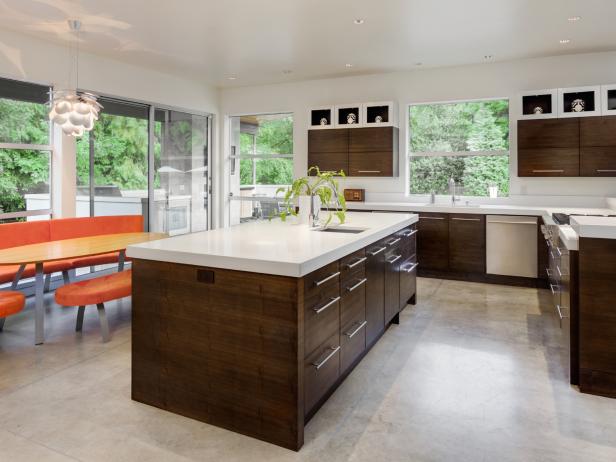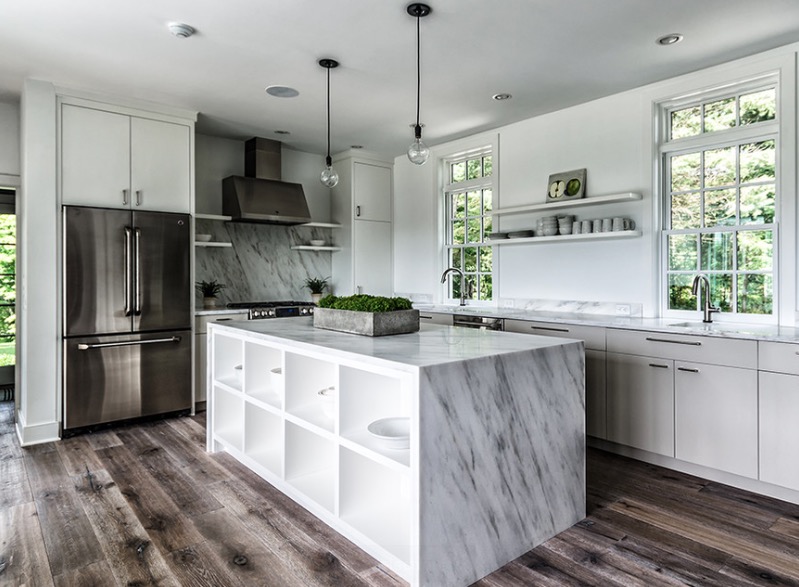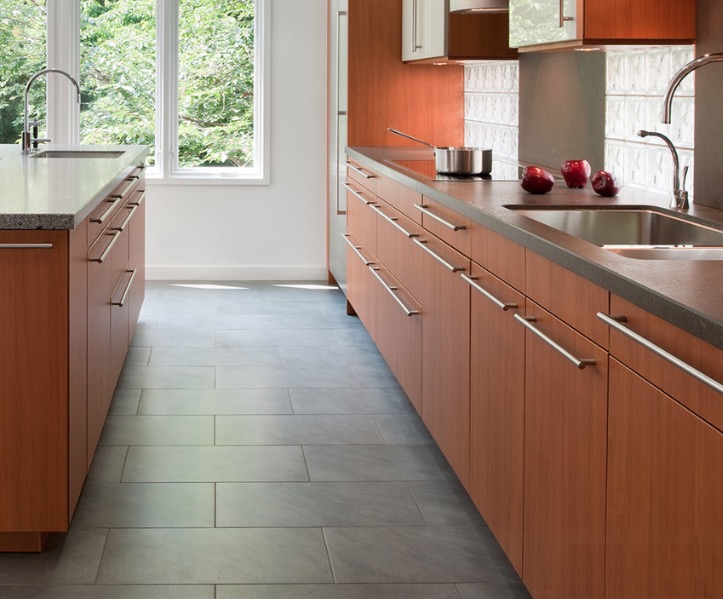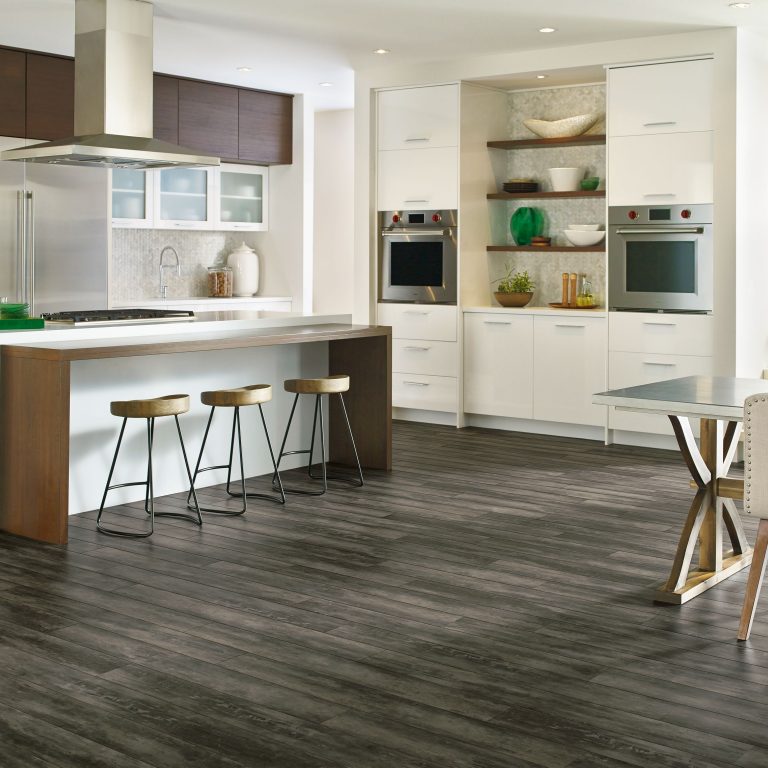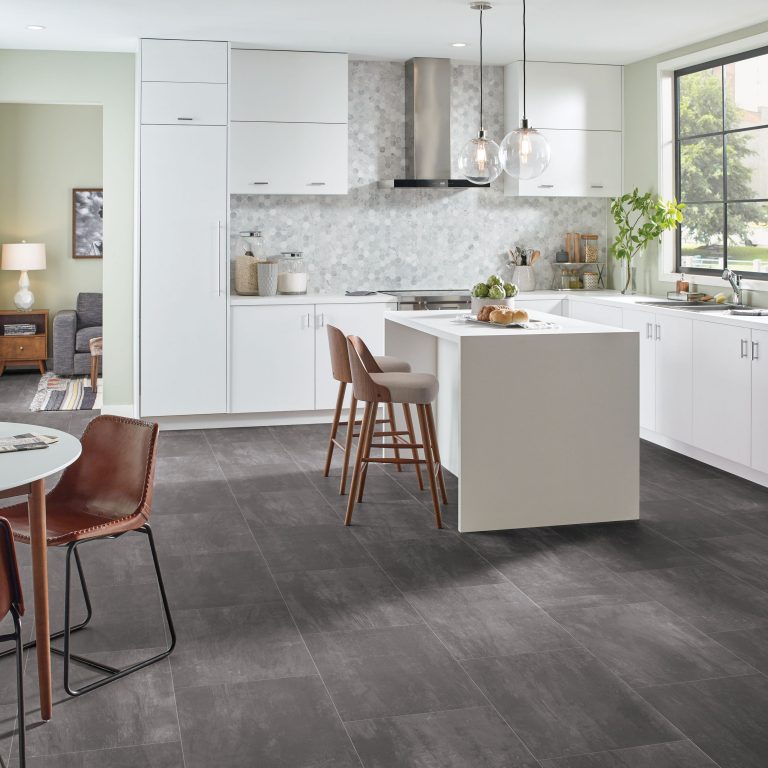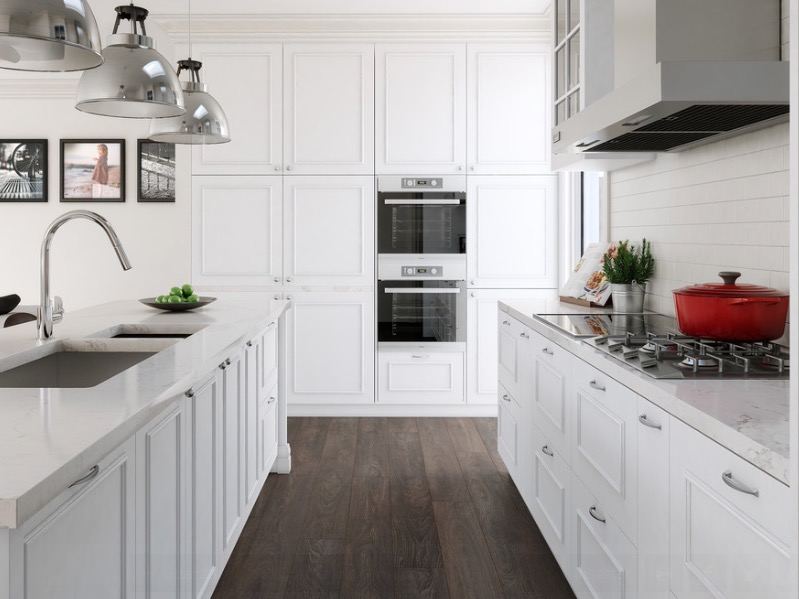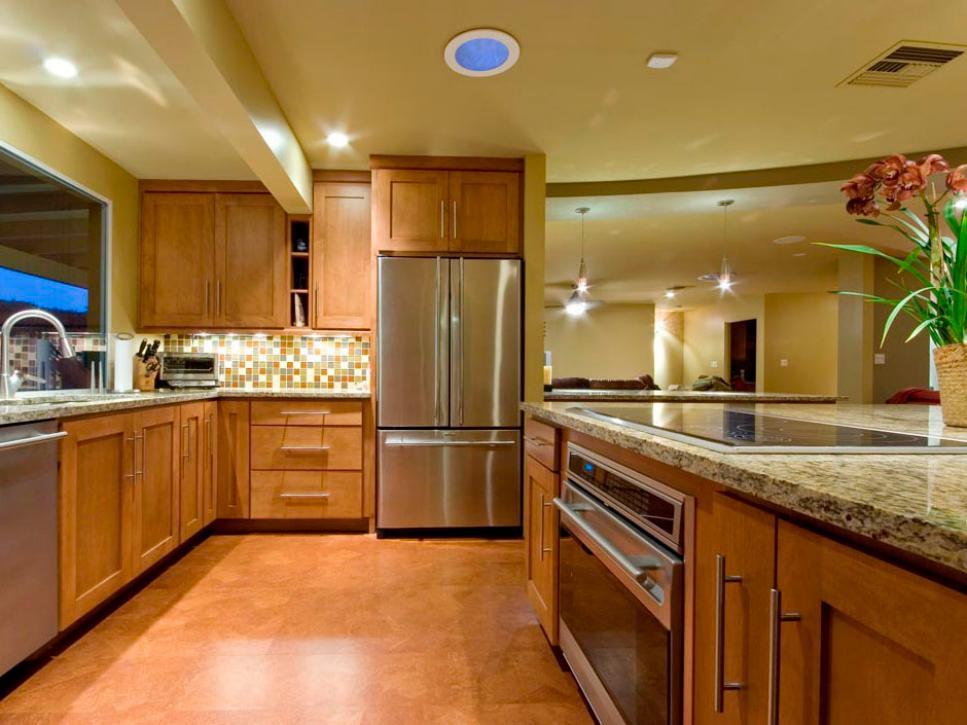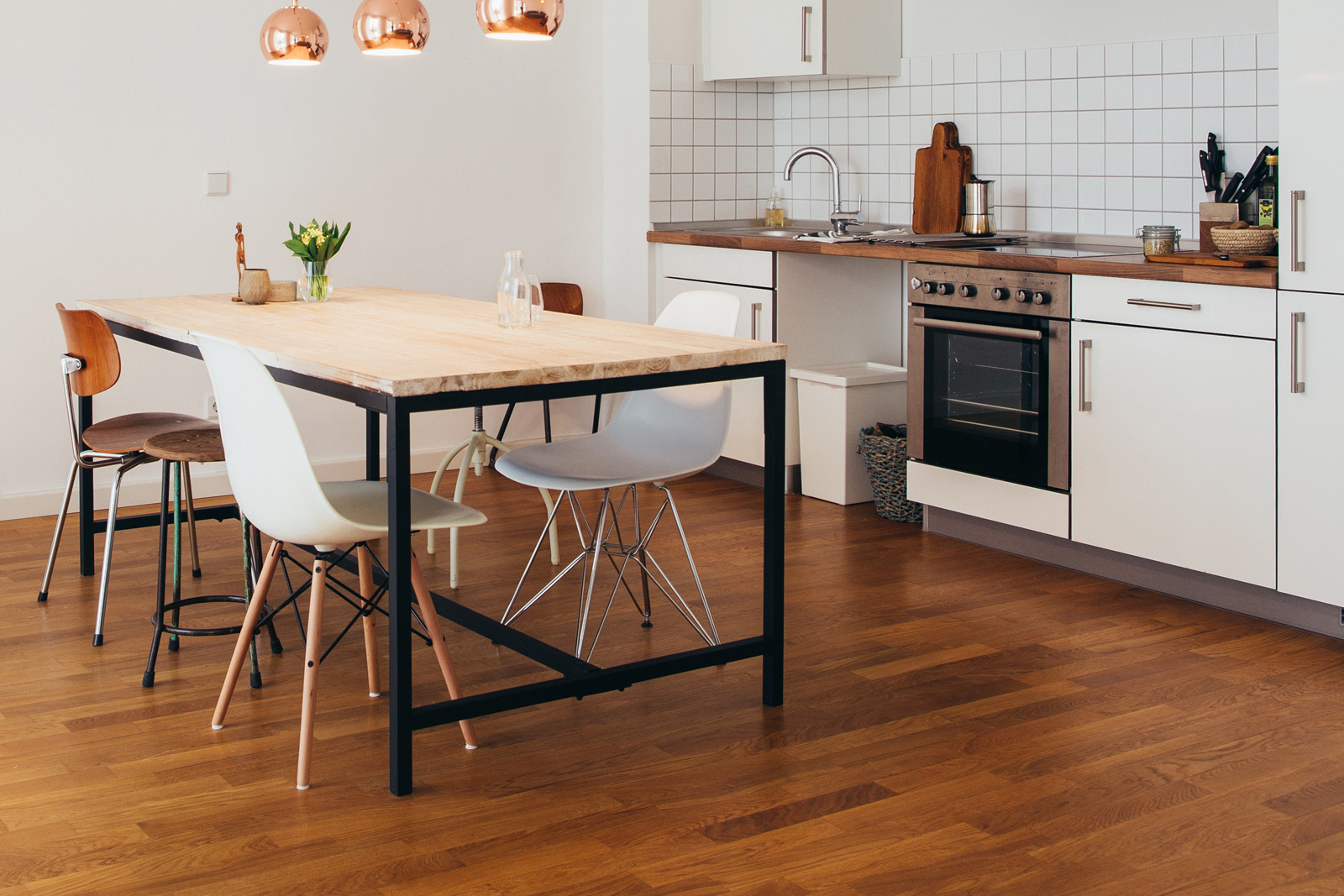What is better for the kitchen floor? Tiles, laminate or linoleum?
Which material is best for the kitchen floor? This question is probably not the first in kitchen planning – nevertheless, it is an important decision that should be well considered. Especially if the floor before the installation of the kitchen (and thus the cabinets and island are on the floor), a replacement of the kitchen floor is often possible only with great effort.
Kitchen floor: tiles, laminate or linoleum
In this article you will learn about the pros and cons of a kitchen floor with tiles, laminate and linoleum.
Kitchen floor with tiles (or porcelain stoneware)
The classic in the kitchen is a tiled floor. Where used to be very often white tiles with gray joints, nowadays high quality stoneware in various sizes and colors often finds its way into the kitchen. Many also resort to patterned tiles in kitchen planning and thus add a personal touch to the kitchen floor.
Benefits of a tiled floor in the kitchen:
- Easy to clean – it can be wiped both very hot and very wet. Tiles are also insensitive to most household chemicals.
- Very durable & durable material.
- Porcelain stoneware give the kitchen a natural look.
- Usually tiles are very sturdy
- Easy replacement if a tile gets damaged.
- Ideal for installing underfloor heating.
Disadvantages of a tiled kitchen floor:
- Tiles are quite cool, especially without slippers or socks (without underfloor heating).
- Very hard – falling crockery often breaks.
- Tiles can rather be counted among the more expensive floor coverings in the kitchen.
Tip: For very light joints, dirt is visible very quickly. Anthracite-, sand- or concrete-gray joints are most insensitive and look new longer.
Laminate kitchen floor
Laminate floors are similar in appearance to wood floors. They are produced by the layered connection of different wood parts (shavings, fibers) under high pressure and high temperature. The surface is usually printed digitally, so all sorts of colors and looks are possible. Since the laminate floor in the kitchen is stressed above average, you should not save on quality and acquire a high-quality laminate floor.
Advantages of a laminate floor in the kitchen:
- Significantly cheaper than, for example, a kitchen floor made of wood.
- Laminate (especially click laminate) is easy and quick to lay
Disadvantages of a kitchen floor made of laminate:
- Laminate should only be wiped damp and not wet.
- Steps on a laminate floor are rather loud.
- Laminate is quite soft and therefore more prone to dents and holes.
- Rather not suitable for dog owners.
Linoleum kitchen floor
Linoleum is a soil material that (unlike PVC) consists of natural raw materials such as linseed oil, cork or wood flour and jute. This intelligent mix of materials creates a kitchen floor that is easy to clean, antistatic and non-slip. Linoleum exists – like tiles – in many different models and colors.
Benefits of a linoleum floor in the kitchen:
- Linoleum floors are easy-care, antistatic and non-slip.
- Linoleum kitchen floors are hardwearing.
- Linoleum is a natural material with a soft, warm feel.
- With proper cleaning also suitable for allergy sufferers.
Disadvantages of a Linoleum kitchen floor:
- Must be laid by a specialist with special linoleum glue.
 Flower Love
Flower Love
